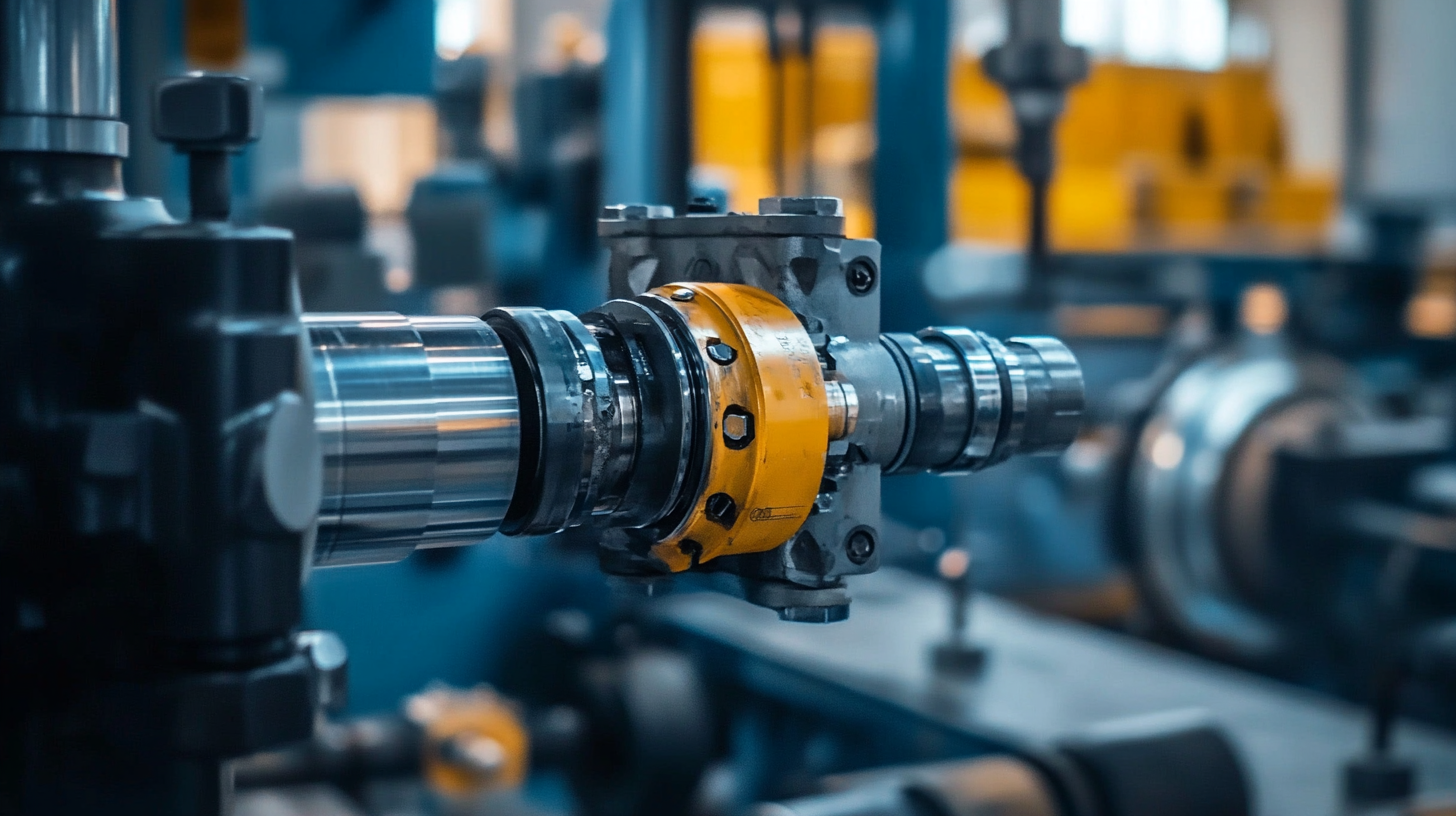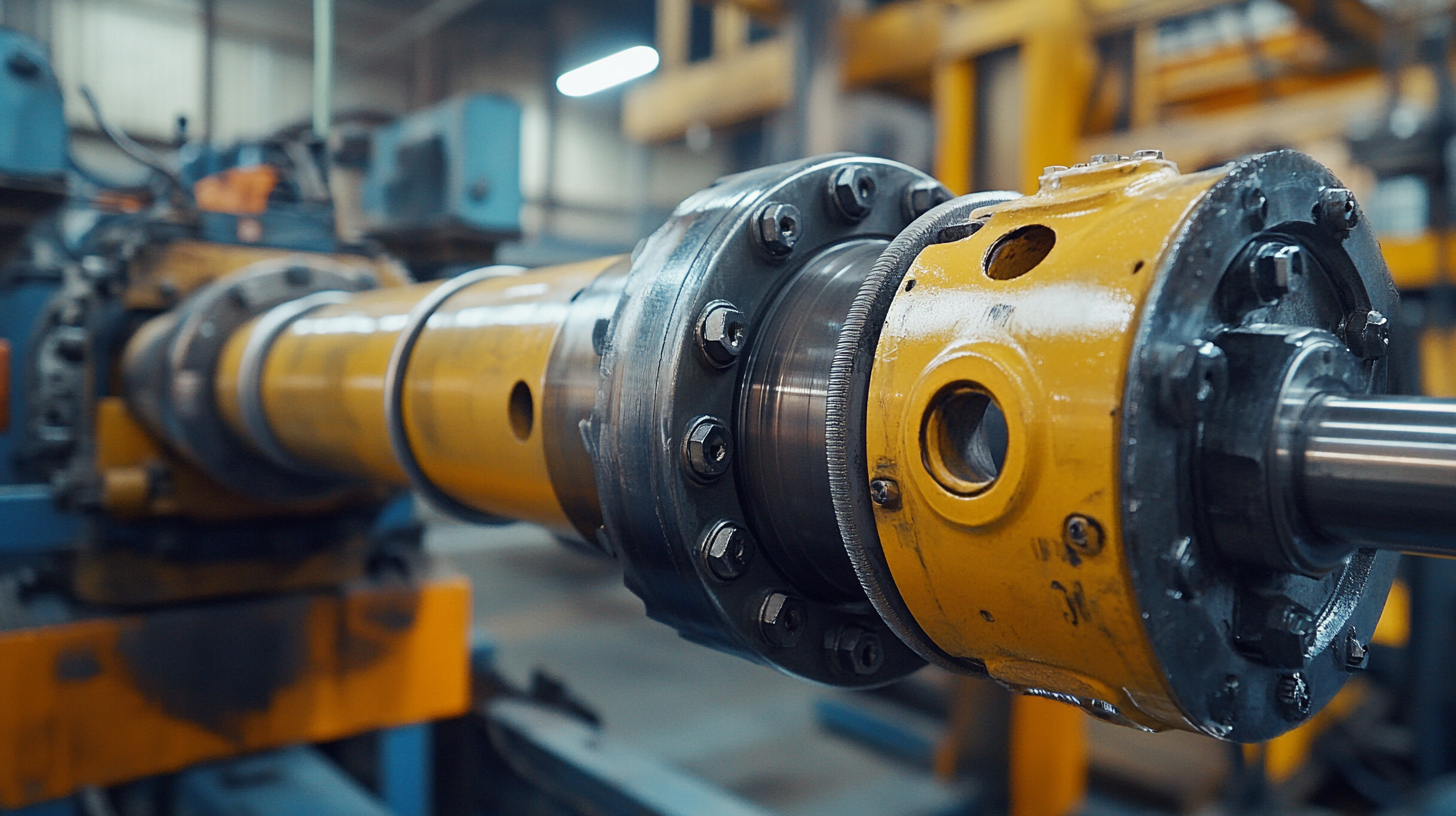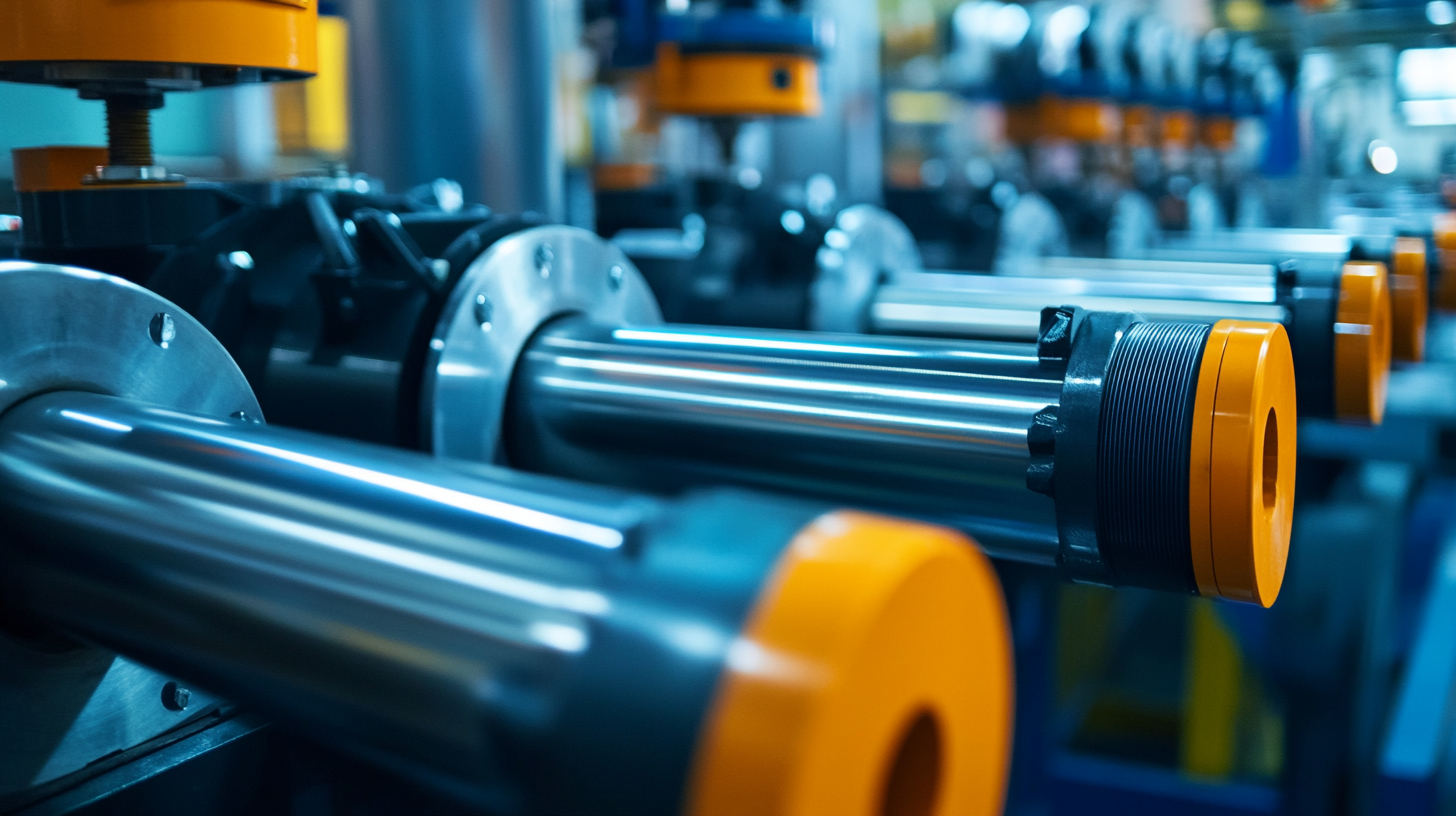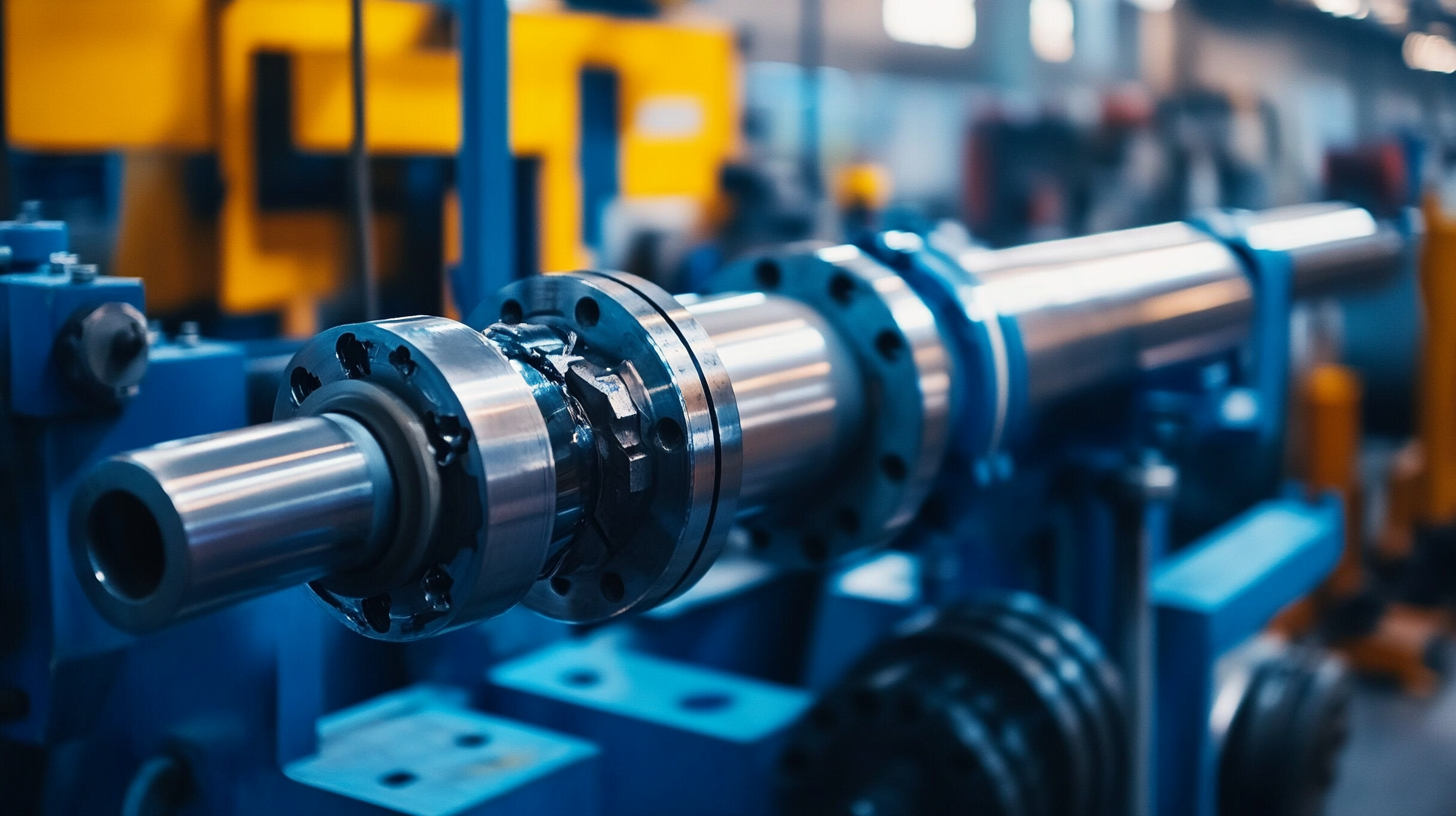Innovative Strategies for Effective Hydraulic Cylinder Maintenance and Repair Solutions
Hydraulic cylinders are pivotal components in a variety of industrial applications, powering everything from construction machinery to manufacturing equipment. According to a recent report from Global Market Insights, the hydraulic cylinder market is projected to surpass $25 billion by 2026, demonstrating the increasing reliance on these devices for efficient operations across various sectors. However, with such extensive use, ensuring the longevity and reliability of hydraulic cylinders becomes paramount. The necessity for preventative measures and effective repair solutions has never been more critical, particularly as the industry faces challenges such as rising equipment wear and unplanned downtime.
Effective hydraulic cylinder repair strategies can significantly enhance operational efficiency and reduce overall maintenance costs. A study by Research and Markets found that proper maintenance protocols can extend the lifespan of hydraulic systems by up to 30%, underscoring the importance of innovative approaches to repair and upkeep. This blog will explore cutting-edge maintenance techniques, common issues in hydraulic cylinder systems, and actionable solutions that can lead to sustainable repairs. By implementing these strategies, businesses can not only minimize downtime but also maximize productivity in an increasingly competitive market.

Best Practices for Scheduling Regular Hydraulic Cylinder Inspections and Maintenance
Regular inspections and maintenance of hydraulic cylinders are crucial for ensuring their longevity and operational efficiency. An effective maintenance schedule not only helps in identifying potential issues before they escalate but also minimizes downtime. One of the innovative strategies gaining traction is the use of ultrasound inspection technology. This method offers reliability managers a straightforward way to monitor hydraulic systems, allowing for early detection of leaks and irregularities that could lead to catastrophic failures. Integrating ultrasound detection into your maintenance routine can significantly enhance your maintenance planning. It’s easy to implement and helps in executing predictive maintenance strategies, which are essential for hydraulic cylinders that are under constant pressure during operations. By conducting regular ultrasonic inspections, maintenance teams can create an actionable timetable for repairs and adjustments, ensuring that the hydraulic systems are functioning optimally. Scheduling these inspections not only promotes routine check-ups but also educates the staff on best practices. With health and maintenance schedules in place, operators can better understand the importance of maintaining equipment like gully emptiers. These machines rely on sophisticated pressure systems, and regular ultrasound assessments can extend their operational life while keeping municipal services running smoothly. Embracing these innovative maintenance practices is a vital step towards operational excellence in hydraulic equipment management.

Understanding Common Hydraulic Cylinder Failures and Their Impact on Productivity
Hydraulic cylinders are essential components in many industrial applications, providing the force needed to lift, push, and move heavy loads. However, these powerful tools are prone to failures that can impact productivity if not addressed promptly. Understanding the common types of hydraulic cylinder failures is crucial for maintenance and repair strategies aimed at minimizing downtime.
One prevalent issue is seal failure, often caused by contamination, wear, or improper installation. When seals fail, hydraulic fluid leaks can occur, leading to diminished performance and potential environmental hazards. Inadequate maintenance, such as infrequent inspections and neglecting to clean and replace filters, can exacerbate this problem. Regularly checking seals, cleaning the cylinder, and ensuring proper installation can greatly reduce the risk of seal failures and keep operations running smoothly.
Another common failure type is cylinder wear. Over time, the internal surfaces of cylinders can become worn due to friction and exposure to harsh conditions. This wear can cause a loss of pressure and effectiveness, hindering productivity. Implementing a proactive maintenance schedule that includes regular assessments of cylinder condition and timely replacements of worn components can help mitigate the risk of performance declines. By understanding these common failures, operators can adopt innovative maintenance strategies that not only prolong the life of hydraulic cylinders but also enhance overall productivity in their operations.

Leveraging Technology: The Role of IoT and AI in Hydraulic Cylinder Maintenance
The integration of the Internet of Things (IoT) and artificial intelligence (AI) into hydraulic cylinder maintenance represents a significant leap forward in maximizing efficiency and extending equipment lifespan. With IoT sensors embedded in hydraulic systems, real-time data collection on parameters such as temperature, pressure, and fluid levels becomes possible. This continuous monitoring enables predictive maintenance, allowing engineers to identify potential issues before they escalate into costly failures. By leveraging this technology, businesses can minimize downtime and optimize their maintenance schedules, reducing operational disruptions.
AI further enhances the capabilities of IoT by analyzing the vast amounts of data collected from hydraulic cylinders. Machine learning algorithms can detect patterns and anomalies that might go unnoticed by human technicians. For instance, AI can assess the performance trends of hydraulic systems and forecast maintenance needs based on historical data and real-time analytics. This proactive approach not only ensures the reliability of hydraulic systems but also informs decision-making regarding repairs and replacements.
Moreover, the combination of IoT and AI can lead to significant cost savings. By addressing maintenance issues proactively and reducing unexpected breakdowns, companies can lower repair expenses and extend the life of critical assets. Ultimately, the smart utilization of these technologies fosters a culture of continuous improvement, where maintenance practices evolve alongside innovations in hydraulic technology, ensuring that organizations remain competitive in a fast-paced industry.

Cost-Benefit Analysis of Predictive Maintenance Solutions for Hydraulic Cylinders
The hydraulic cylinder market is poised for substantial growth, projected to reach an estimated USD 16.82 billion by 2024, with a compound annual growth rate (CAGR) of 4.4% from 2025 to 2030. As industries increasingly recognize the importance of hydraulic systems for efficient operations, the implementation of innovative maintenance strategies becomes critical. Predictive maintenance solutions have emerged as a key factor in addressing the challenges of hydraulic cylinder upkeep, enabling companies to anticipate failures before they occur.
A recent market research study indicates that the global industrial hydraulic equipment market is expected to be valued at USD 52.6 billion by 2033, growing at a CAGR of 5.7%. One of the drivers behind this growth is the increasing adoption of predictive maintenance technologies, which allow for real-time monitoring and data analysis. By leveraging these systems, organizations can enhance machine performance monitoring and improve response times to maintenance issues, ultimately leading to increased uptime and reduced operational costs.
Companies that successfully implement predictive maintenance strategies report significant improvements in efficiency and cost savings. By adopting a proactive approach to maintenance, businesses can minimize downtime and extend the lifespan of hydraulic cylinders and associated equipment. The hydraulic pumps market is also projected to experience a dramatic expansion, expected to grow 17 times from 2025 to 2035. This trend underscores the necessity for intelligent maintenance solutions that align with the evolving demands of today’s industrial landscape.
Essential Tools and Techniques for Effective Hydraulic Cylinder Repair and Overhaul
When it comes to effective hydraulic cylinder repair and overhaul, having the right tools and techniques is essential to ensure longevity and optimal performance. One of the most critical tools in hydraulic maintenance is the hydraulic bench, which allows for safe disassembly and assembly of cylinders. This dedicated workspace not only enhances safety but also increases the efficiency of the repair process. Additionally, specialized tools such as seal kits, honing machines, and torque wrenches are vital for ensuring that each component is handled correctly and assembled to the manufacturer's specifications.
Proper technique plays a crucial role in the maintenance process as well. For instance, utilizing a systematic approach to disassembly, such as documenting each step and keeping parts organized, helps prevent errors and ensures that reassembly is straightforward. Techniques like the use of ultrasonic cleaning can significantly improve the cleanliness of components, which is critical for preventing contamination-related failures. Moreover, inspecting the cylinder rod for scratches and wear during maintenance allows for timely replacements and adjustments, further extending the lifespan of the hydraulic system.
Finally, regular training on the latest advancements in hydraulic technology and repair methods can greatly enhance the skills of maintenance personnel. Workshops and seminars focused on innovative techniques and tools can provide invaluable insights, enabling teams to perform repairs more effectively and efficiently. Emphasizing a culture of continuous learning ensures that maintenance strategies evolve alongside technology, thereby ensuring optimal operation of hydraulic cylinders for years to come.

